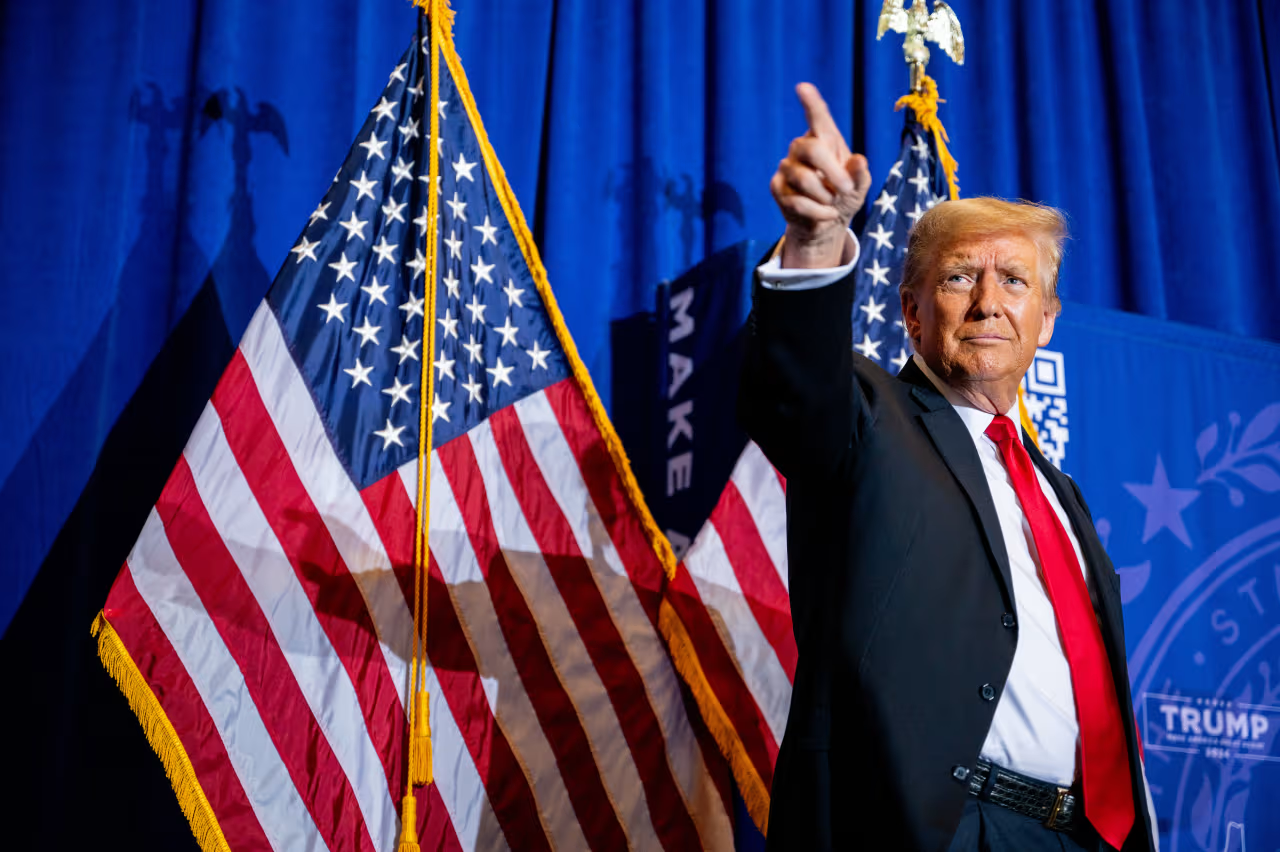
The dollar has been stronger in real terms than now in only four months since the 1985 Plaza Accord, when the world’s leading trading nations got together to devalue the greenback. The U.S. is about to get a president who thinks the U.S. has a “big currency problem” because the strong dollar hurts domestic manufacturers.
Yet, the markets have been betting that Donald Trump’s policies will mean an even stronger dollar, with the currency up 5% against developed trading partners and 4% against emerging ones since the start of October, when Trump’s win began to be priced in.
Could the market have Trump all wrong? Answering this is hard, but vital: The dollar is the global reserve currency, helping set the price not just for international trade but also for markets in almost everything.
Start with the case for a strong dollar. The economy is roaring, even before Trump’s planned tax cuts and assault on red tape designed to improve productivity. Much of the rest of the world is struggling, even before the tariffs Trump has been talking about for years. Trump wants to protect the dollar’s reserve currency status, a status that increases demand for dollars elsewhere. And he wants to boost oil and gas production, something likely to further increase energy exports.
This seems like an open-and-shut case. Stronger growth should mean a stronger currency. Higher productivity, at least in the traded goods sector, ought to mean a stronger currency. Naturally, the dollar is strong.
The case for a weaker currency is harder to make. First up, Trump wants a weaker currency. He’s a self-declared low-interest-rate guy who argued as recently as this summer that the dollar needed to be weaker to help U.S. manufacturing.
What a president wants, though, a president doesn’t necessarily get. In his first term, the dollar initially jumped in expectation of tariffs, then fell back until the tariffs were imposed in 2018. After that, the dollar strengthened again, rising enough against the yuan to completely offset the tariffs.
Second, perhaps Trump isn’t really the Tariff Man markets think. It has become commonplace to say he is transactional, so tariffs would be used merely to extract concessions from trading partners. Recent evidence supports the claim, with the president-elect threatening 25% tariffs on Canada and Mexico if they didn’t do more to stop illegal migration and drug smuggling. (Both countries’ leaders called or visited immediately, suggesting the threat was taken seriously.)
If tariffs are an alternative to sanctions in enforcing American policies, not just about trade, they are up for negotiation and might not last long—or even be introduced. The dollar could weaken.
The third argument is that the dollar only needs to weaken against some currencies, especially the yen and yuan—and those were the currencies Trump focused on in his speech about the overly strong currency in the summer. Since everyone including the Bank of Japan agrees that the yen, in particular, is far too weak, this should be fixable without necessarily adjusting the dollar much against other currencies.
Finally, it is possible that Trump will get the economy back into balance. The markets expect tax cuts to blow out the already-huge deficit even further, keeping the economy hot and the dollar strong. But if the cost-cutting drive led by billionaire Elon Musk works out, perhaps the deficit can be reined in.
To navigate between these arguments, go back to the Plaza Hotel—not in 1985 as the currency accord was being negotiated, but in October 2024. Hedge-fund manager Scott Bessent, since named Trump’s pick for Treasury secretary, used the Grant’s conference at the hotel to present an economic argument for tariffs.
My takeaway was that Bessent is skeptical about directly manipulating the dollar, preferring to focus on the structure of the economy that drives the currency. He is transactional about tariffs, but the concession he wants is deep reform of the Chinese economy. If China and other export-focused countries consumed more, it would be a win for all and allow them to strengthen their currencies against the dollar.
But as Bessent pointed out, the Chinese economy’s structure helps keep the Communist Party in power. At the very least, it won’t change quickly, so if tariffs are used to force change, expect them to last a long time.
He also insisted that cutting the deficit was vital. “Out-of-control federal spending is one of the primary drivers of the U.S. consuming more than it produces,” Bessent said. He, at least, believes in Musk’s cost-cutting mission.
The best case I see for a weaker dollar is that it’s already so strong that it’s vulnerable to surprises. If Japan’s economy can generate internal demand and allow rate rises while Europe finds a way to boost productivity, much of the narrative around the strong dollar would dissipate.
If, on top of that, tariffs are used more selectively than expected and the budget deficit is reduced, the dollar should pull back significantly.
But as with so much of the uncertainty ahead of Trump’s return to the White House, those are ifs.


